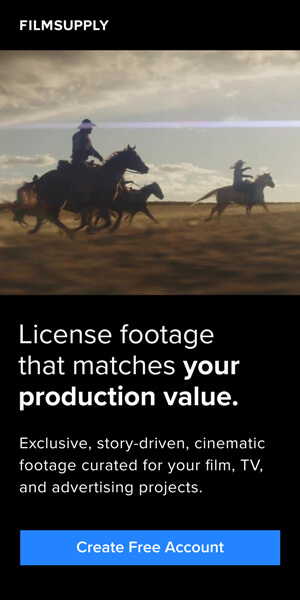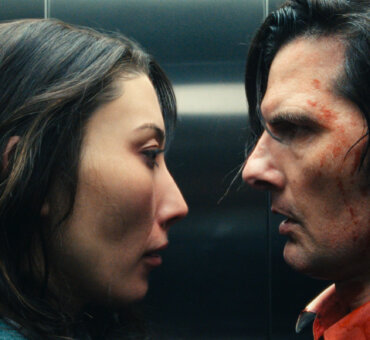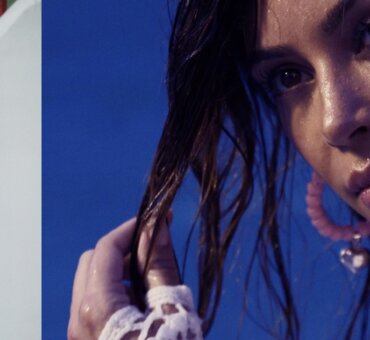Raised on a Wisconsin farm with a single video store and a nonstop appetite for movies, Sean U’Ren didn’t just fall into editing. He devoured it. Now a VFX editor and filmmaker working with VSA Partners in Chicago, Sean brings a rare mix of experimental film-school sensibility and practical storytelling chops to the commercial world.
In a time when brand stories are trending toward authenticity, emotional resonance, and editorial precision, Sean’s process mirrors the shifts happening industry-wide: combining tech fluency with an instinct for rhythm, surprise, and human connection.
Sean discussed with us storytelling, trends, and why Filmsupply is still his go-to resource when the footage needs to feel cinematic—fast.
What inspired you to pursue a career in editing and filmmaking?
Sean U’Ren: I’m from a rural part of Wisconsin, literally raised on a farm. When I was growing up, we had a single video store in town, and I watched almost every movie I could get my hands on, from good to really bad.
In addition to watching movies nonstop, the late 1980s/early 1990s were a sort of new age of commercials. Many commercial directors and ad agencies were starting to push the boundaries of story, tone, and character.
Even though I didn’t know what made them different, a lot of spots just felt different.
How did your early experiences shape your approach to commercial editing?
Sean U’Ren: I went to a very art-forward film school and took a lot of experimental film and video editing courses. We studied optical printing and video compositing.
One visiting professor, Martin Arnold, showed me how to tell stories by just repeating a few frames of film over and over. I also got to work with Chris Smith and Sarah Price, who made American Movie, one of the most successful docs ever.
And a lot of the more influential a-ha moments happened while watching a ton of shorts and weird films.
Sometimes you’d sit in a screening room for class, and they’d run a film that was nothing but noise and flash frames for 20 minutes. As harrowing as it sounds, that experience of being exposed to a massive amount of art cinema gave me a big vocabulary to work with as I got more into editing.
What excites you most about working in the commercial space?
Sean U’Ren: Everyone brings a different vision, a different voice to the projects I work on. It’s really interesting to help a director or producer find the most emotionally satisfying way to move through a very short idea or story.
Most, if not all, commercials start out fairly simply. You’ve got a product that you’ve gotta get in front of people. You might look over the boards and scripts, thinking, Great, another story about hot dogs.
But if you can make people in the edit bay recall their love of hot dogs like the critic from Ratatouille? That’s the magic.
RELATED READS: Chris Gipson on the Art of Commercial Editing
What do you think makes a commercial edit truly stand out?
Sean U’Ren: Rhythm, emotional resonance, wit. Sometimes, an extra five or six frames makes a beat in a commercial go from amusing to laugh-out-loud funny.
Also, the use of visual space in the frame. And something that genuinely surprises you, whether it’s an unexpected moment of sound or a quick vibe shift. Even exceptional type animation can elevate a plain spot into something more.
How do you elevate storytelling and evoke emotions in your edit?
Sean U’Ren: Every cut starts by assembling the boards or the scripted edit. If it’s a music video or a branded short, sometimes you just have a few ideas scribbled on a post-it note that was stuck to the hard drive they’ve sent you.
Once I figure that out in a rough assembly, I get specific and begin digging into the dailies, add soundups, and sometimes ten to fifteen potential music tracks. Maybe I’ll add in unstarred takes or start comping takes together to make them work better.
If there’s enough time and you reach a level of saturation, it’s sometimes fun to pull out elements and run them through with pruning shears until what’s left is the absolute best stuff and the best way to tell the story.
RELATED READS: Acclaimed Editor Lizzy Graham on the Art of the Cut
What role does collaboration play in your editing process with directors and agencies?
Sean U’Ren: Collaboration is everything. A lot of times, a director or an agency has a style or a brand that they’re trying to stay mindful of when they bring you a project. Or they want to push boundaries and shift the game pieces once they get a sense of the editor’s skillset.
Thinking of a “job” as something more, as a close partnership between you and the creatives, will almost always lift up the material.
Even in situations where the deadlines are tight and there’s not a lot of wiggle room, creatively speaking, a sense of trust between everyone will go a long way toward helping the final cut make it over the finish line.
What trends in commercial editing are shaping the way brands tell stories today?
Sean U’Ren: Swipe transitions, bounces in and out of shots, jitter cuts, anything you see on social media. A little eye candy that grabs attention successfully in a social feed is fair game in the studio, for better and (sometimes) for worse.
The trick is learning the editing vocabulary for the specific project you’re working on, whether it uses trendy elements or resists them. Sometimes, you can push back against super-fast transitions and see what a single take or multiple takes comped together can accomplish.
RELATED READS: 5 Essential Elements of Branded Content from The North Face’s Production Team
Like Bresson said, “Against the tactics of noise, of sound, set tactics of stillness, of silence.”
Usually, after you’re done playing cuts and explaining all this film theory, the producer will nod politely and show you a TikTok on their phone. And you’ll just have to “make it look like that.”
How do you approach integrating VFX and live-action footage in a way that enhances storytelling?
Sean U’Ren: Mostly just making sure that I’m comfortable with quickly creating mattes, using comping tools, color keys, sound mixing.
Weirdly, a large part of “selling” VFX and live action work in offline has less to do with adjustment layers and more to do with making sure that the best performances are in place, that the most effective human moments are in the cut.
I try to keep an open channel of communication with the animators or the company producer. It’s easy to Slack them or come to their desk and show the idea you’re trying to execute or maybe mark up a shot you’re hoping to tweak.
At the final stages of the edit, you’re no longer just a stand-in for the director; you’re the actual director. I try to keep that in mind as things move closer to finish.
What’s one commercial project you’ve worked on that you’re proud of?
Sean U’Ren: A Pilgrim’s Chicken Nuggets commercial with Logan. (Shoutout to Kenji Yamashita and Peter Rynsky, the amazing director and our producer, respectively). They brought me to midtown Manhattan for multiple edit sessions and sit-downs with their creative team.
In the end, it took an insane amount of work to make those nuggets dance and sing. At one point, I think I had over 20 active layers on some timelines. We were working with live-action actors, digital renders, hand-drawn-style animation, and a slew of puppets and puppeteers.
I had to listen to that theme song at least seventy thousand times.
Why would you recommend Filmsupply as a resource for editors, agencies, and post houses?
Sean U’Ren: A lot of the footage I find on Filmsupply looks like it could be dropped directly into a feature film or a music video. The production value of the shooters and their camerawork, the lenses, the performances, the grading — it’s like having an entire production house ready to go whenever you need it.
I’ve used other footage resource houses and even tried out those janky footage-generating AI tools, but no other company or resource even comes close.






